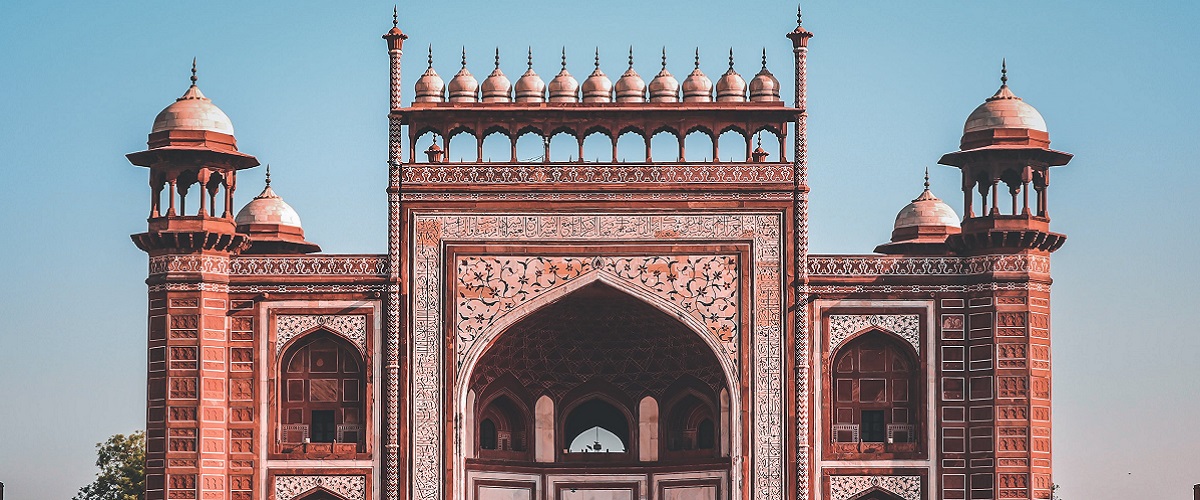loading...
loading...



ITINERARY
01
Arrive Indore. Sightseeing of Indore
Indore - It is the cleanest city of India and has always fascinated its tourists with the charisma of its architectural magnificence and intriguing history. It has been home to various historical monuments and religious places, built by the great Holkar, who ruled the city for several years.
On arrival, transfer to your hotel and check in.
Later set off on a tour of the city.
Rajwada: It is the historical palace of the Holkars, built almost two centuries ago, located in the centre of the city.
Lal Baag Palace: It is one of the most spectacular buildings in Indore. The structure was built on the bank of River Khan by Maharaja Shivaji Rao Holkar.
Kanch Mandir: It is made entirely of glass and mirrors by the “Cotton King” Sir Hukamchand Seth, a Jain leader in the early 20th century.
Chattris (Cenotaphs) Of Indore: They were built in the memory of the Holkar rulers.
Sarafa And Chappan Market: It is a great place to relish a large variety of snacks that the people of Indore love to gorge on, including poha-jalebi, daal-baati, and sabudana khichdi. A great way to end a cold winter evening!
Overnight at hotel in Indore.
02
Mandu
After breakfast, check out and transfer to Mandu. The city of Mandu is adorned with spell-binding Afghan architecture surrounded by baobab trees, native to Africa. The grand palaces are still alive with royal romance while the gateways (darwazas) speak of a history of imperial conquests. A walk through Mandu will leave you awe-struck.
Darwazas (Gateways): The 45 km parapet of walls that encircle Mandu are punctuated by 12 gateways. Most notable of these is Delhi Darwaza, the main entrance to the fortress city, for which the approach is through a series of gateways well-fortified with walled enclosures and strengthened by bastions such as the Alamgir and Bhangi Darwaza, through which the present road passes.
Hoshang Shah’s Tomb: India’s first marble edifice is one of the most refined examples of Afghan architecture. Its unique features are the magnificently proportioned dome, marble lattice work of remarkable delicacy and porticoed courts and towers to mark the four corners of the rectangle.
Ashrafi Mahal: Built by Hoshang Shah’s successor, Mahmud Shah Khilji, this ‘palace of gold coins’, facing the Jami Masjid, was conceived as an academic institution for young boys, and sundry cells remain in a fair state of preservation.
Jahaz Mahal: This 120-meter-long ‘ship-shape’ built between the two artificial lakes, Munj Talao and Kapur Talao, is an elegant two-storeyed palace.
Hindola Mahal: An audience hall belonging to Ghiyas-ud-din’s reign, derives the name of ‘Swinging Palace’ from its sloping sidewalls.
Baz Bahadur’s Palace:It was built by Baz Bahadur with an aqueduct to provide Roopmati’s palace with water. Today, the pool is revered as a sacred spot.
Rani Roopmati Mahal: On the lofty hill to the south beyond the palace of Baz Bahadur stands the pavilion associated with the romantic name of Roopmati.
03
Maheshwar
Situated on the banks of river Narmada, Maheshwar appeals to both, the pilgrim as well as the tourist in you. The town possesses a treasure trove of beautiful temples that calm the soul, alongside man-made creations that please the eyes. A centre of handloom weaving since the 5th century, Maheshwar has been producing the exquisite Maheshwari saris and fabric. The town also holds the distinction of being the capital of Rajmata Ahilya Devi Holkar's empire during the 18th century. This historic town weaves spirituality and folklore with the beauty of nature and Maheshwari saris, bringing alive child-like awe in you.
Rajgaddi And Rajwada: A life-size statue of Rani Ahilyabai sits on a throne in the Rajgaddi within the fort complex. This is the right place to begin a tour of Maheshwar, for this pious and wise queen was the architect of its revived importance.
Ghats: Peshawar Ghat, Fanase Ghat and Ahilya Ghat line the river Narmada, and flights of steps lead down from the sandy banks to the river, and through the day a kaleidoscope of rural India can be seen here.
Temples: With their soaring spires, the many-tiered temples of Maheshwar are distinguished by their carved overhanging balconies and their intricately worked doorways.
Maheshwari Sarees: Introduced into Maheshwar 250 years ago by Rani Ahilyabai, the sarees are renowned throughout India for their unique weave.
Overnight in Maheshwar.
04
Departure
After breakfast, check out and transfer to Indore for your onward flight.


 Photo Gallery
Photo Gallery